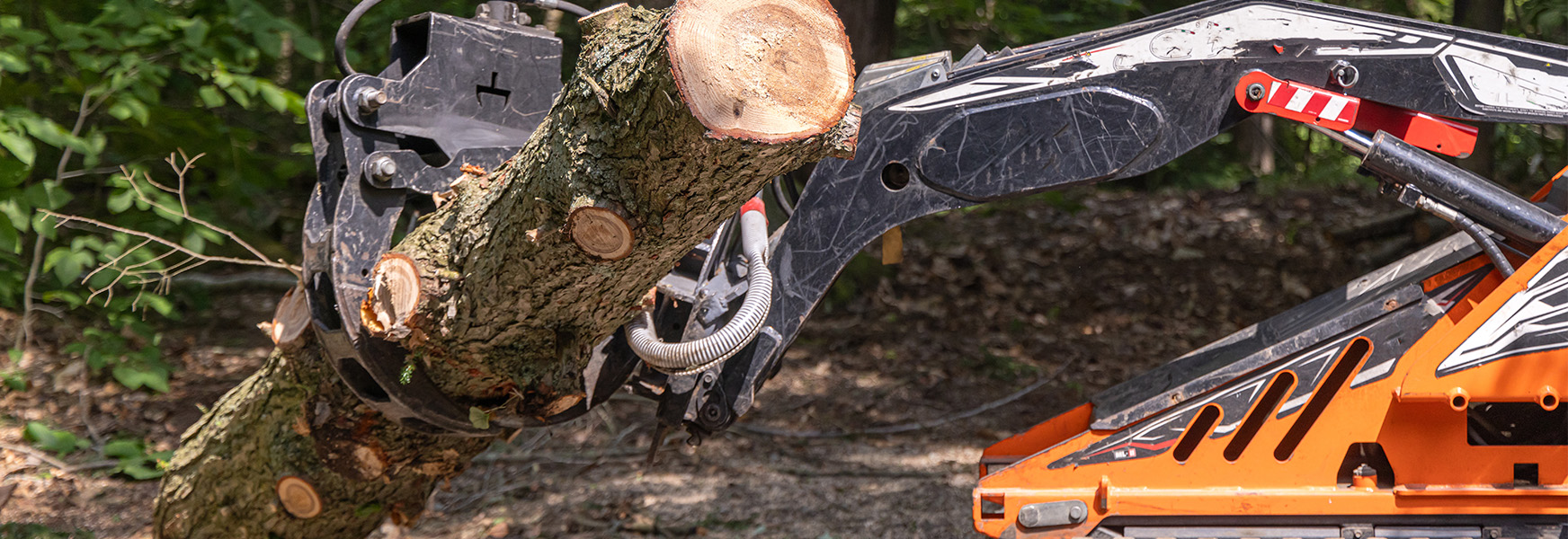Mini Skid Steer Loaders: Small Machines, Big Headaches?

Mini skid steer loaders have recently exploded in popularity within the small business contractor segment. Arborists, landscapers, and many others in this group have found these machines to be an effective countermeasure to the rapidly rising cost and shrinking availability of manual labor. Smaller than most traditional skid steers, the loader’s compact size allows it to fit through narrow gates and work in areas previously accessible only by wheelbarrows and on foot. Tracked versions can allow for an even lighter footprint.
Like any new technology, the benefits of mini skid steers are realized before all the costs are understood. In this case, the main cost is operator safety. The stand-on or walk-behind operation of these machines leaves few options for ensuring the safety of the person at the controls. Operators are at risk of being crushed between the machine and other objects, struck by materials falling out of the bucket, and catapulted from the platform if the machine encounters a rapid change in terrain.
Most modern heavy equipment has evolved to incorporate elements that minimize the risk associated with the previous scenarios. Operator’s stations are placed well within the confines of the machine envelope. Dependent on application, they are often also protected by Roll-Over-Protective-Structures (ROPS), Falling-Object-Protective-Structures (FOPS), and impact guarding. Suspension seats are a huge improvement for ergonomics, and air conditioning can mitigate exposure to heat and dust.
However, these safety features are not standard on mini skid steers. The lack of a seat also appears to allow for a sidestep around current SAE and ANSI standards involving Roll-Over-Protective-Structures (ROPS) and Falling-Object-Protective-Structures (FOPS). Early walk-behind models were equipped with a “bump gate” that would stop machine movement if an operator was pinned between the machine and a solid object. New machines lack this feature but have an operator platform and some protruding geometry that would protect an operator’s torso if the machine were to back into a solid vertical surface. However, this protection may be ineffective if that vertical surface has protrusions or low overhead clearance.
When these machines first came on the market, they were relatively small, with operating capacities of three to seven hundred pounds. As a labor multiplier, they were a great solution to reducing hand-lugging and wheelbarrow use in tight spaces. With advances in technology in response to market demands, these machines have grown in size and capability, with the largest one currently on the market weighing over seven thousand pounds and rated to lift over three thousand pounds. Readily available attachments include brush grapples, stump grinders, and demolition hammers.

As someone who has used all of the attachments mentioned from a distance of over twenty feet within a protective cab, I can attest to the amount of dust and large debris generated. Now, picture the exposure to an unprotected operator positioned less than eight feet away from the work area.
The high-vis vest, sunglasses, and hardhat seen in many promotional videos are not going to be effective against these hazards. As with any operation, no matter the size, documented training and job site assessments are essential. For example, the open operator’s platform may expose workers to temperature extremes and silica, which will need to be addressed.
Mini skid steers are most likely governed by OSHA’s general duty clause, making justification for use challenging. It is easy to see the value of using a small machine to replace the manual labor of a wheelbarrow. However, when using some of the larger machines in this category for such jobs as brush clearing, it would be difficult to argue why a stand-on machine should be used instead of a more conventional skid steer with adequate safety features. (OSHA Act of 1970 | OSHA.gov | Occupational Safety and Health Administration)
Mini skid steers have certainly become a valuable tool for taking the back-breaking labor out of many work processes and they are able to perform a multitude of tasks. However, employers must prioritize safety and compliance for operating these machines, making sure they are the best fit for the task, and providing adequate protection for employees.
Related MEMIC Blogs:
- No Shortcuts to Safety When Doing it Yourself
- Toiling Safe in the Trenches
- The Impact of Crystalline Silica In Interior Wall Construction
- Unearthing the Challenges of Mud
- Sizzling Solutions: Reviewing OSHA’s Proposed Heat Safety Standard
Other Resources:

